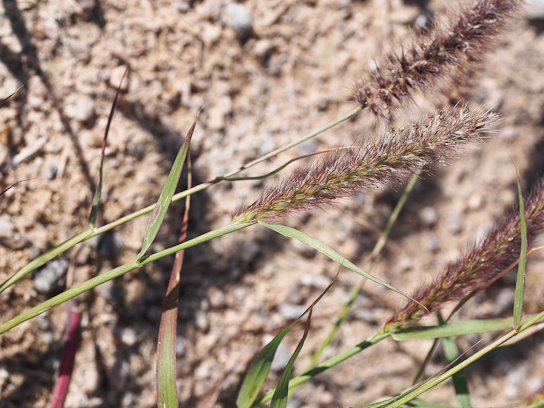Created by: Chris McDonald
Created on: Tuesday, Sep 20th, 2022
Created on: Tuesday, Sep 20th, 2022
Yes or No:
Yes
Points:
1
Confidence Level:
Very High
Answer / Justification:
Buffelgrass has invaded southwestern North America, Arizona, New Mexico, Texas, Mexico incl. Sonora and Chihuahua. Also invading in Australia and South Central Asia (India, Pakistan), and also found in Hawaii. Native to Africa and the Middle East. Buffelgrass is on the Arizona noxious weed list and the New Mexico watch list.
Reference(s):
Yes or No:
Yes
Points:
2
Confidence Level:
Very High
Answer / Justification:
Buffelgrass is invasive in Australia and southwestern North America, where the climate is similar to California including the Sonoran Desert.
Reference(s):
Yes or No:
Yes
Points:
2
Confidence Level:
Very High
Answer / Justification:
Invasive in US and Australia
Reference(s):
Yes or No:
Yes
Points:
3
Confidence Level:
Very High
Answer / Justification:
Invading southwestern North America and Australia, both of which have climates that match California.
Reference(s):
Yes or No:
Yes
Points:
1
Confidence Level:
Very High
Answer / Justification:
Several other Pennisetum's are also invasive. Including Fountaingrass (Pennisetum setaceum), kikuyu (Pennisetum clandestinum) Chinese fountain grass (P. alopecuroides) . Buffelgrass is also listed as Cenchrus ciliaris, several other Cenchrus' are also invasive (Cenchrus setiger)
Yes or No:
Yes
Points:
2
Confidence Level:
High
Answer / Justification:
Buffelgrass grows in southern Africa, the middle east, south central Asia, eastern Australia, southwestern North America and all these places match the climate of California. Buffelgrass seems to occur in about half of climate zones that it grows in that also match California. (NOTE: not listed as very high confidence, because there are several large semi-tropical areas where buffelgrass grows that are outside climate of CA, eastern Africa, eastern South America (Brazil), Texas and central Mexico.)
Reference(s):
Yes or No:
Yes
Points:
1
Confidence Level:
Very High
Answer / Justification:
Buffelgrass displaces native plants in several locations where it is invasive, including Australia, Hawaii, and Sonoran Desert. It can also overtop and smother smaller native plants.
Reference(s):
Yes or No:
Yes
Points:
1
Confidence Level:
Very High
Answer / Justification:
Buffel grass adds fuels to desert ecosystems where fuels are historically limited. Buffelgrass also adds fuels to semi-tropical grassland ecosystems altering the fire regime.
Reference(s):
Yes or No:
No
Points:
0
Confidence Level:
Very High
Answer / Justification:
Buffelgrass is often introduced to semi-arid ecosystems to increase forage for livestock. Buffelgrass has been viewed as a beneficial forage grass for livestock producers.
Reference(s):
Yes or No:
No
Points:
0
Confidence Level:
Very High
Answer / Justification:
While buffelgrass increases fuels and has been planted as a forage grass, it does not create impenetrable thickets for most animal species. The grass is generally less than 1.5 m tall and less than 1 m tall when not in flower. It does alter habitat quality and decrease species richness.
Reference(s):
Yes or No:
Yes
Points:
1
Confidence Level:
High
Answer / Justification:
Buffelgrass can reproduce via stolons or rhizomes. The main mode of reproduction is by seed and is apomictic (produces seed asexually).
Reference(s):
Yes or No:
No
Points:
0
Confidence Level:
High
Answer / Justification:
Buffelgrass is a grass and may occasionally reproduce by tillers separating from the parent plant, however this is uncommon and would require the plant to be disturbed.
Reference(s):
Yes or No:
Yes
Points:
1
Confidence Level:
Very High
Answer / Justification:
Yes, reproduces by seed
Reference(s):
Yes or No:
Yes
Points:
1
Confidence Level:
Very High
Answer / Justification:
Individual buffelgrass inflorescences can produce over one hundred seeds and individual plants can have dozens of inflorescences.
Reference(s):
Yes or No:
Yes
Points:
1
Confidence Level:
Very High
Answer / Justification:
Germination of buffelgrass seeds was 25-35% in India and similarly as high in Mexico when placed under warm growing conditions. Seed viability drops over time.
Reference(s):
Yes or No:
Yes
Points:
1
Confidence Level:
Very High
Answer / Justification:
Buffelgrass plants can produce seed in two years or less.
Reference(s):
Yes or No:
Yes
Points:
1
Confidence Level:
Medium
Answer / Justification:
Buffelgrass is a C4 grass and generally reproduces during the warm summer rains. It can produce flowers from spring through summer or anytime the soil is wet and warm enough. Jepson lists flowering from April to October.
Reference(s):
Yes or No:
Yes
Points:
1
Confidence Level:
Very High
Answer / Justification:
Buffelgrass seeds can disperse via animals, including getting stuck in their fur, and buffelgrass seeds can spread long distances and new patches form long distances from previously known patches.
Reference(s):
Yes or No:
Yes
Points:
1
Confidence Level:
Medium
Answer / Justification:
Seeds have bristles and can be spread by wind or water. Several sources suggest seeds can float. And populations can spread and disperse quickly in variety of patterns (guerrilla and phalanx, see Olssen et al. 2012).
Reference(s):
Yes or No:
No
Points:
0
Confidence Level:
Low
Answer / Justification:
Seed dispersal can be on clothes as the seeds have bristles, however references do not suggest the frequency of this type of dispersal. Most often buffelgrass is intentionally dispersed to increase forage, or seeds are dispersed by wind, water or animals. Buffelgrass has been introduced across the globe intentionally as a pasture grass, to remediate reduced forages, while others have viewed its invasiveness as a problem for natural areas (see Marshall et al. 2012).
Reference(s):
Websites accessed:
Pennisetum ciliare (L.) Link in GBIF Secretariat (2021). GBIF Backbone Taxonomy. Checklist dataset https://doi.org/10.15468/39omeiaccessed via GBIF.org on 2022-11-30.
https://keyserver.lucidcentral.org/weeds/data/media/Html/cenchrus_ciliaris.htm accessed 2022-11-30.
https://agriculture.az.gov/pestspest-control/agriculture-pests/noxious-weeds accessed 2022-11-30
https://wiki.bugwood.org/Pennisetum_ciliare#Reproduction accessed 2022-11-30
https://pubs.nmsu.edu/_circulars/CR698/ accessed 2022-11-30
https://www.desertmuseum.org/buffelgrass/learn.php access 2022-11-30
James P. Smith, Jr. 2012, Pennisetum ciliare, in Jepson Flora Project (eds.) Jepson eFlora, https://ucjeps.berkeley.edu/eflora/eflora_display.php?tid=36817, accessed on November 30, 2022.
https://keys.lucidcentral.org/keys/v3/pastures/Html/Buffel_grass.htm accessed 2022-11-30
- < 13 : Low Potential Risk
- 13 - 15 : Moderate Potential Risk
- > 15 : High Potential Risk
PRE Score:
21
Number of questions answered:
20
Screener Confidence (%):
90.0
Organization:
Evaluation visibility:
Public - accessible to all site users

